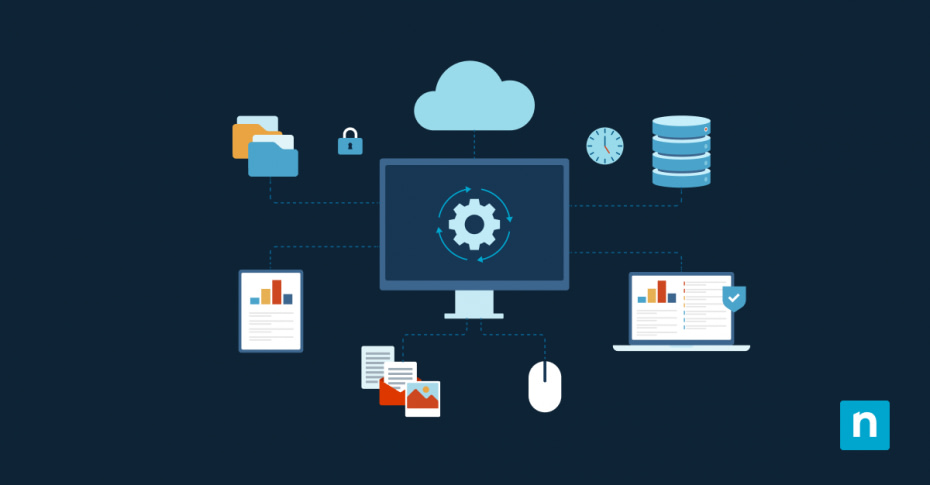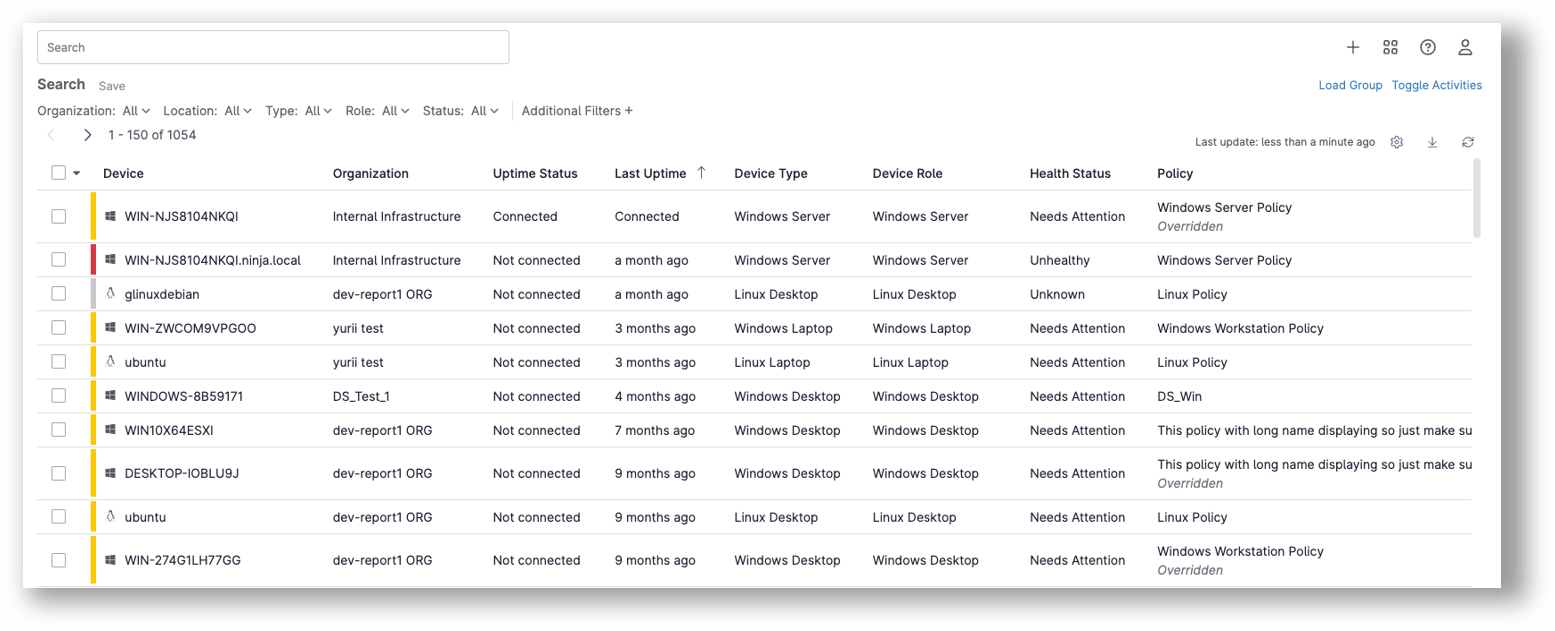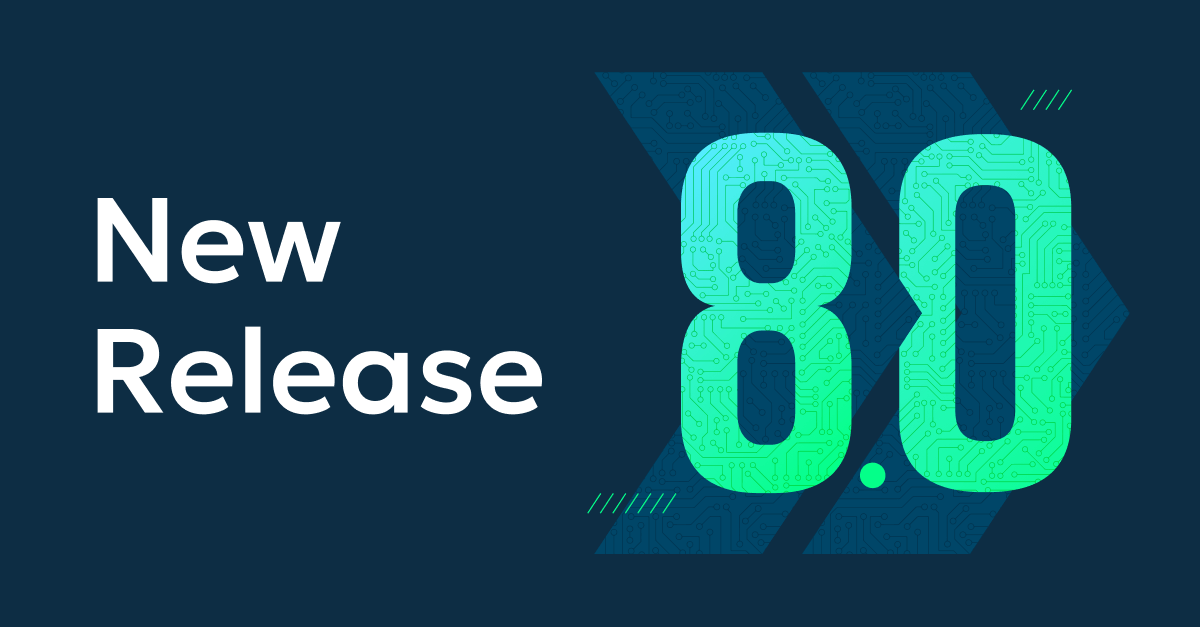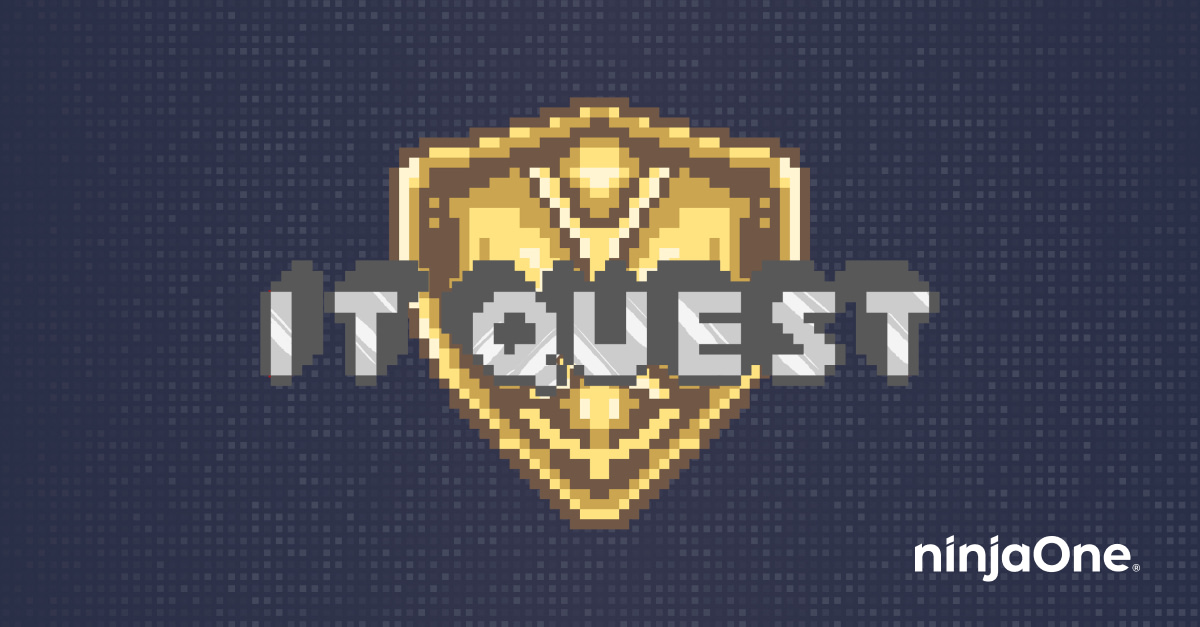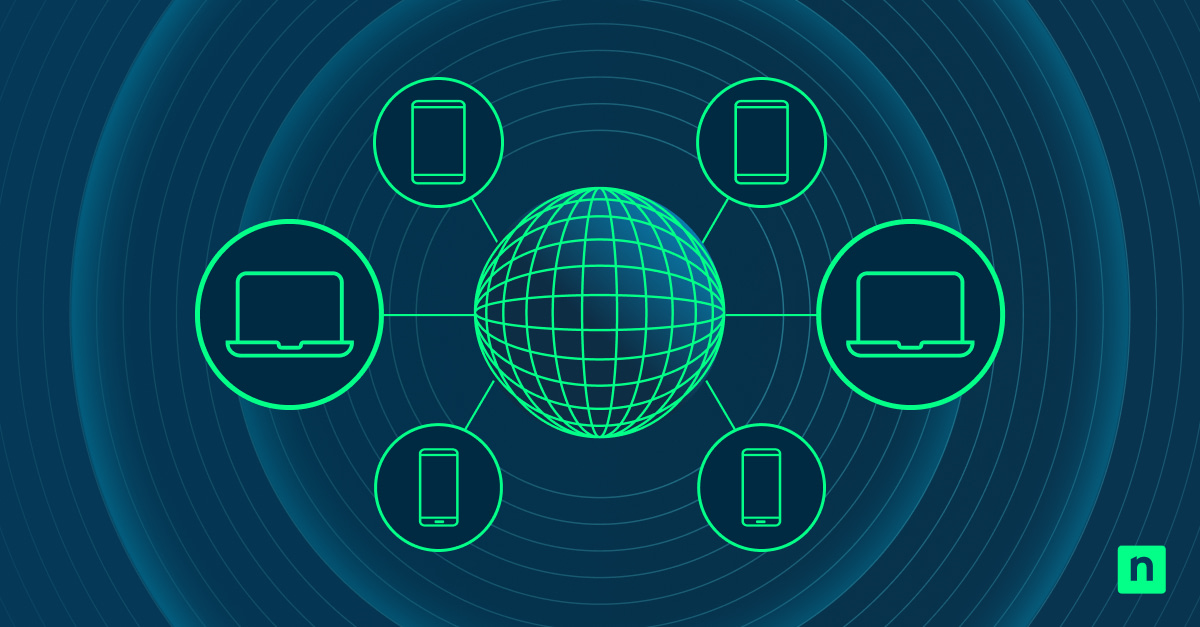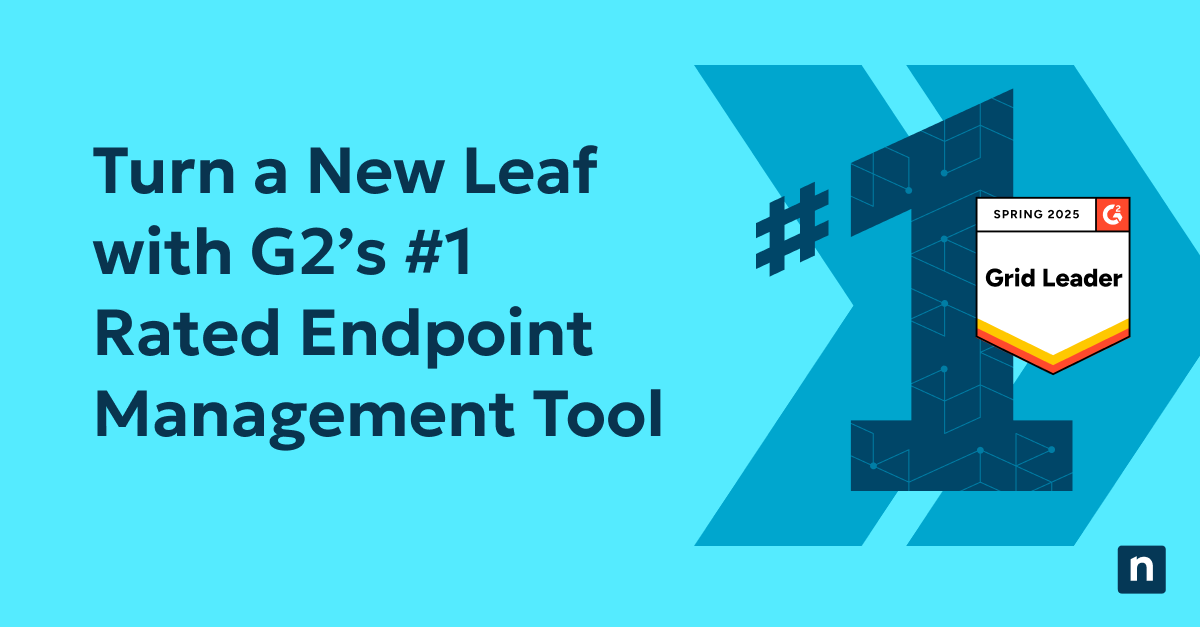Our Summer 2023 Release delivers over 30 major updates across the platform, including significant improvements to our core remote monitoring and endpoint management solution.
- Customer-requested features: The release includes numerous features that our customers have been asking for, such as better visibility into patch status and endpoint health, a new way to see and report on device information and much more.
- New automation capabilities: Perhaps the most exciting enhancements are new, more powerful automation capabilities that enable build once/deploy broadly capabilities. These capabilities will allow our customers to automate their IT operations more effectively and efficiently.
Overall, this release is a major step forward for our remote monitoring and endpoint management solution. It includes a wide range of new features and enhancements that will help our customers improve the security, performance, and manageability of their endpoints. Here is a quick overview video.
RMM and endpoint management enhancements
Automation time savers
- NinjaOne’s Software Package Repository is a powerful tool that allows technicians to bundle all the actions, helper files and elements needed to run complex software installation workflows into one neat package. These packages can be stored in our Automation Library and easily run anywhere, anytime you need to install software. This feature was a major request by NinjaOne customers, and we are excited to make it available. Watch Product Lead Gavin Stone demonstrate how to use the Software Package Repository to automate your software installations:
- Dynamic Script Forms are a new feature in NinjaOne that allows technicians to insert parameters into a script via a graphical interface. This makes it easy to customize script outcomes without touching the script code. Dynamic Script Forms make scripts more reusable, more dynamic and easier for front-line staff to deploy. Here’s another video of Gavin Stone walking through how to use Dynamic Script Forms to make scripts more powerful and flexible.
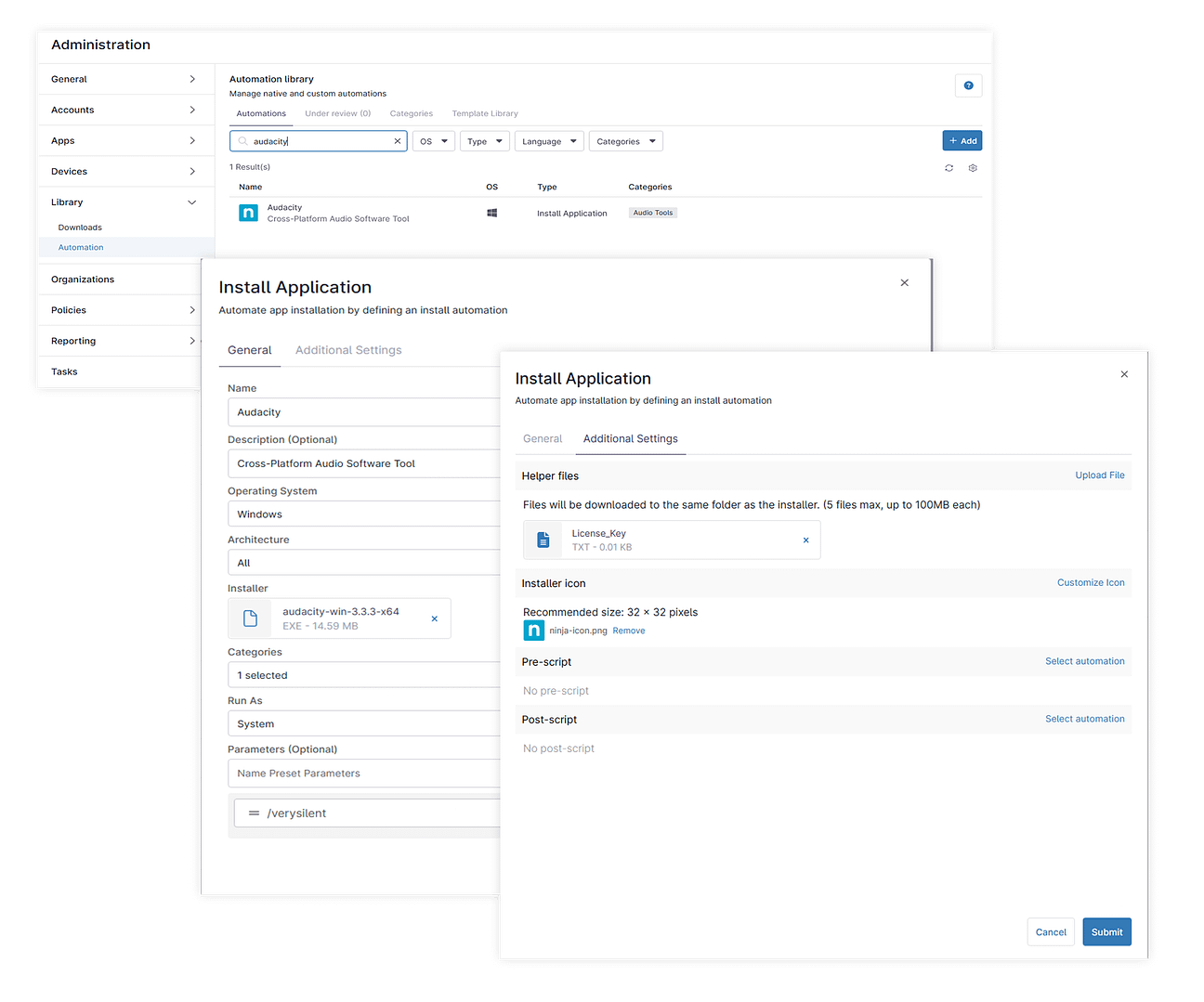
New dashboard views
- The new Patch Management Dashboard offers a panoramic view of the status of all patches scheduled, running, pending, and completed to help you stay on top of all your patching activities. Watch Product Lead Chris Williams highlight the new dashboard.
- Device Search Grid allows technicians to add and arrange device data columns any way that fits their needs. To customize the view even more, multiple filters can be used to create very granular and targeted lists of endpoints that can be acted up or exported as a report. View this walk through by Rahul Hirani, SVP of Product, to see the new view in action.
- Create a Report of Device Custom Fields allows admins to add columns for custom fields in-line with devices for inclusion in reports. Choose relevant fields and save column setup as part of a Device Group.
Policy improvements
- Policies by Location provides another level of granularity and control over how endpoints are managed, reducing the need to apply policy overrides at the individual device policy level.
- Custom Field Inheritance – Policy inheritance improvements introduced in 5.3.9 for Organization, Location and Device custom fields has been expanded to include Device Search expanding automation possibilities.
Improve endpoint monitoring with 4 new health conditions
- Antivirus Health surfaces the status of the antivirus software on each device
- Pending Reboot triggers and alert for devices that have not been rebooted for a defined period
- Battery Status provides battery info on the device Details page
- Patch Condition Status triggers an alert if a patch has not been applied on a defined period (1-120 days).
Faster, more granular search capability
Search by Common Vulnerability and Exposures (CVE) IDs in all Patch Views – Find all devices that are affected by specific vulnerabilities with this important feature.
Search on Minor Software Releases. Quickly zero in on the devices that have software sub (X.XX.XX) versions installed.
End User identity & authorization improvements
- End User SSO – End Users can now log in with their organization’s own identity provider rather than using local NinjaOne credentials. This provides a faster, more intuitive sign in experience for end users and reduces the number of credentials they must track.
- End User Roles can now be defined in NinjaOne for end users, making it much easier to assign permissions and create a consistent end user experience.
API improvements
- API Support for Organizations/Locations and Custom Fields – This update assists API endpoints to fetch and set Organization and Location custom fields. In addition, this update provides new querying abilities for endpoints to see values set at specific levels and apply inheritance to existing endpoints.
NinjaOne documentation improvements
- Public links for Documentation articles can now be provided to end users so they can resolve issues themselves!
- Two-Way Documentation Tagging enables technicians to tag a specific device within a Knowledge Base article. Conversely, at the Device view, the Knowledge Base article that references that specific device is displayed.
- Paste images directly in the Documentation Editor to Knowledge Base articles to enhance the communication capability of documents.
- Global Knowledge Base Link in System Dashboard adds a Documentation dropdown menu to the NinjaOne main console offering a direct link to the Global KB.
- Hide Unused Templates for an Organization – When viewing ‘Apps & Services’ in Organizations, admins can now hide or unhide unused templates, making it faster and easier to find what they’re looking for.
New NinjaOne Data Protection feature
- Backup Mac Files & Folders – in addition to being able to back up MacOS, NinjaOne Data Protection (Backup) can now back up Mac files and folders.
- Data Deletion Management Updates – NinjaOne Backup customers will now have more options and security safeguards surrounding the deletion of backup data. Multi-factor authentication is now required to delete backup data, and all deleted data will be held for 72 hours before it is permanently deleted in case of accidental or unauthorized deletions.
- NT File System (NTFS) Permissions – Users can now backup and restore files with their originally assigned NTFS file permissions.
Ticketing improvements
- Faster Performance – The Ticketing team has reworked how data is fetched for the ticketing board resulting in significantly faster board loading performance.
- Improved display of emails in the ticketing feed
- Limit to user update emails – if a user is set in multiple places on a ticket, they will only receive one email per update
- Addition of “@mention” capability to include other technicians on a ticket
The New Location board column resolves an automation issue
NinjaOne 5.4 is a major release that includes over two dozen new features and improvements. Every enhancement was designed to help NinjaOne customers improve the security, performance and manageability of their endpoints. More importantly, however, most of the features should help customers save time and automate processes to be more repeatable and flexible. To get more detail on all the features mentioned, please look for our Release Notes and additions to Documentation in the NinjaOne Dojo.
We hope you enjoy this release!

